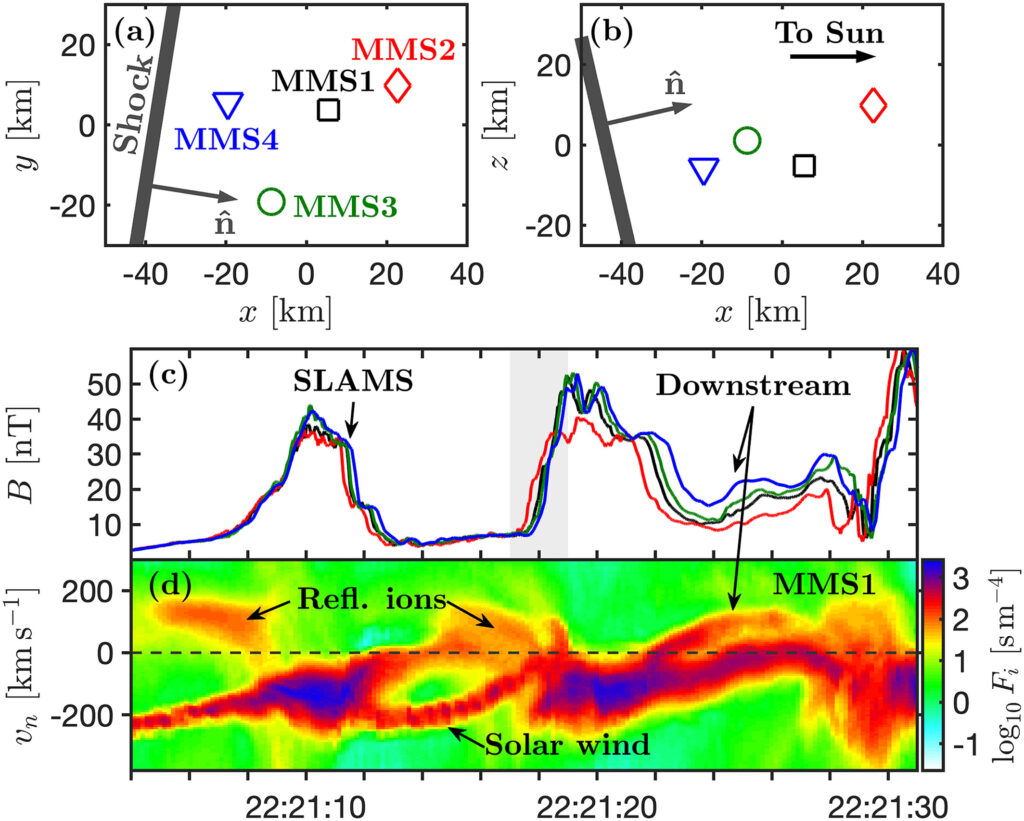A shock wave forms when a supersonic flow encounters an obstacle. Shock waves can even form in the ionized plasma that inhabits most of the seemingly empty space in our solar system, galaxy, and the rest of the universe. One such a shock is found in front of Earth as the fast stream of plasma flowing from the Sun, known as the solar wind, encounters Earth’s magnetic field. Under certain conditions, shock waves can become unsteady and evolve in time. Specifically, it is thought that a new shock can form in front of and replace the old shock in a process known as shock reformation. This process is important for how shock waves heat the plasma and can play a major role in how shocks accelerate particles. In this work, we use data from satellites that fly through Earth’s shock and compare to a computer simulation of the shock wave. We find that a type of magnetic pulsation in front of the shock wave causes it to reform. The method of finding this reformation process presented here can also be used in the future to find shock reformation.

Full Article:
Johlander, A. (SHARP), Battarbee, M., Turc, L., Ganse, U., Pfau-Kempf, Y., Grandin, M., et al. (2022). Quasi-parallel shock reformation seen by Magnetospheric Multiscale and ion-kinetic simulations. Geophysical Research Letters, 49, doi: 10.1029/2021GL096335
License: CC BY 4.0





